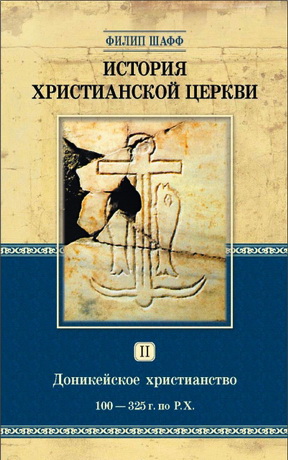
Sanders – Paul and Palestinian Judaism

Rarely in biblical scholarship has a book made such an immediate and lasting impact as did Paul and Palestinian Judaism: A Comparison of Patterns of Religion. E. P. Sanders did what apparently no New Testament scholar had done before by combing through virtually all of the available Palestinian Jewish texts from 200 BCE to 200 CE—early materials in rabbinic literature, the Dead Sea Scrolls that had thus far been published, and the most pertinent apocryphal and pseudepigraphical books.
His goal was to identify the shared presuppositions and pillars of Jewish theology, compare them with those of Paul, and advance new theses for understanding both. Noting the earlier insights of figures like Solomon Schechter, George Foot Moore, Albert Schweitzer, W. D. Davies, and Krister Stendahl, he crafted a proposal intended to move not only Pauline scholarship but also the entire field of New Testament studies beyond lingering debates about the nature ofJudaism.
Sanders’s research led him to the conclusion that much of that field had long interpreted Judaism in general and the rabbis in particular in ways that were uninformed, unfair, and derogatory. Many scholars had long argued that Jews believed in a dry, works-righteousness religion in which each individual has to earn his or her salvation by piling up good deeds (or works of the law), resulting in either “smug self-righteousness” or profound anxiety.
Critics of Judaism had alleged that it “necessarily tends towards petty legalism, self-serving and self-deceiving casuistry, and a mixture of arrogance and lack of confidence in God.” Noting the lasting influence of Martin Luther’s distinction between justification by works and justification by faith alone, Sanders traced the dissemination of these charges through a current of scholarship that included Ferdinand Weber, Wilhelm Bousset, Hermann Strack and Paul Billerbeck, and Rudolf Bultmann.
His own poring over Jewish texts convinced him that such scholars had either failed to examine the sources themselves, drastically misinterpreted them, or woefully or even willfully misrepresented them. He boldly proclaimed in his preface that he intended to destroy this prejudicial view of Judaism and replace it with one that was more historically accurate. Sanders insisted that most Jewish sources assumed a strikingly different belief system, even in their diversity.
To paraphrase his now famous summary: Jews believed that God had chosen and established a covenant with Jews and given them the Torah. Jews lived by the Torah as their covenant obligation and as a means of maintaining membership in the covenant people. God rewarded obedience and punished disobedience, but with divine mercy included provisions for repentance and atonement within the framework of the Torah.
Salvation for the people of Israel came because of God’s forgiveness, grace, and covenant faithfulness, not because of perfect observance of the Torah or the works of individual Jews. Sanders dubbed this theology “covenantal nomism.” Paul’s conviction that God had acted decisively through Christ led him to “an essentially different type of religiousness from any found in Palestinian Jewish lit-erature.” His central conviction was that salvation lay in “being in Christ,” a notion Sanders calls participationist eschatology. “Justification by faith in Christ” and “dying with Christ” are “transfer terminology” that Paul uses to describe how Jews and Christians alike join the body of Christ.
E. P. Sanders – Paul and Palestinian Judaism
A Comparison of Patterns of Religion,
40th Anniversary Edition
Fortress Press Minneapolis – 2017 y. / 673 p.
Print ISBN: 978-1-5064-3814-6
eBook ISBN: 978-1-5064-3845-0
E. P. Sanders – Paul and Palestinian Judaism – Contents
- Foreword
- Preface to the 40th Anniversary Edition
- Preface to the 1977 Edition
- Abbreviations
INTRODUCTION I
- 1. Paul and Judaism in New Testament scholarship
- 2. The holistic comparison of patterns of religion
- Purpose of the study
- Difficulties of the comparison
- Addendum: patterns and trajectories
- 3. Sources
PART ONE PALESTINIAN JUDAISM
I TANNAITIC LITERATURE
- 1.The persistence of the view of Rabbinic religion as one of legalistic works-righteousness
- 2.The use of Rabbinic material
- Pharisees and Rabbis
- Date and authenticity
- The eclectic use of Tannaitic material
- 3.The nature ofTannaitic literature
- Tannaitic literature and Tannaitic religion
- 4.The election and the covenant
- The theme of gratuity
- The election and the explanations of it
- The enduring validity of the covenantal promises
- God’s side of the covenant: commandments and blessings
- 5.Obedience and disobedience; reward and punishment
- The requirement of obedience The burden of obedience Disobedience as sin and guilt Reward and punishment
- 6.Reward and punishment and the world to come
- God’s justice and retribution in the world to come Weighing fulfilments and transgressions at the judgment
- 7.Salvation by membership in the covenant and atonement
- All Israelites have a share in the world to come
- The Sadducees
- The amme ha-arets
- Atonement
- Summary
- 8.Proper religious behaviour: zakah and tsadaq
- Zakah
- Tsadaq
- 9.The Gentiles
- 10.The nature of religious life and experience
- Studying and doing and the presence of God Prayer and the time of death
- 11.Conclusion
II. THE DEAD SEA SCROLLS
- 1.Introduction
- 2.The covenant and the covenant people
- The covenant
- The members of the covenant and its enemies
- 3.Election and predestination
- 4.The commandments
- 5.Fulfilment and transgression; the nature of sin; reward and punishment
- The requirement of fulfilment Destruction of the wicked Sin as transgression
- Punishment for intra-covenantal transgression
- Reward, the requirement of perfection and man’s nothingness
- 6.Atonement
- 7.The righteousness of God and the righteousness of man
- 8.The religious life
- 9.Conclusion
- Appendix 1: The authorship and Sitz im Leben of the Hodayot
- Appendix 2 : IQS 8.1-9.2
- Appendix 3: IQS 8-3f
- Appendix 4 : The nothingness of man and Gattungsgeschichte
III. APOCRYPHA AND PSEUDEPIGRAPHA
- 1.Ben Sirach
- The election and the covenant
- The fate of the individual Israelite; reward and punishment Atonement
- Covenant, commandments, sin and atonement in Ben Sirach and Rabbinic literature The wicked and the righteous
- 2.I Enoch
- Introduction
- The Book of Noah
- I Enoch 12-36
- I Enoch 83-90
- I Enoch 91-104
- I Enoch 1-5; 81; 108; 93.1-10; 91.12-17
- Summary
- 3.Jubilees
- The election
- The commandments
- Reward and punishment
- The basis of salvation; the ‘true Israel’
- The Gentiles
- God’s mercy; man’s repentance and atonement The righteous
- Appendix 1: Jubilees and the Essenes Appendix 2: The integrity of Jubilees
- 4.The Psalms of Solomon
- Introduction
- The pattern of religion in Ps. Sol. 9 The election
- The commandments; chastisement; reward and punishment
- God’s justice and mercy
- Repentance and atonement
- The identification of the righteous and the wicked
- The righteousness of God
- 5.IV. Ezra
IV. Ezra in recent scholarship: the problem posed by the book The dialogues The visions
IV. PALESTINIAN JUDAISM 200 b.c.e.-200 c.e.: Conclusion Covenant and law
- The common pattern of religion: covenantal nomism Apocalypticism and legalism Sects and parties
- Judaism in the time of Jesus and Paul
PART TWO PAUL
V. PAUL
- 1.Introduction
- Sources
- Method of proceeding
- The question of the centre and the beginning point
- 2.The solution as preceding the problem
- 3.Pauline soteriology
- The future expectation and its present guarantee
- One body, one spirit
- Transfer terminology
- Salvation of mankind and the world
- 4. The law, the human plight and the relationship of the solutions to it
- The law; righteousness by faith Man’s plight
- Righteousness and participation The varying definitions of man’s plight
- Addendum: Plight and soteriology in Paul according to S. Lyonnet
- 5.Covenantal nomism in Paul
- 6.Judgment by works and salvation by grace
- 7.Coherence, relevance and sources
- Appendix: Perspectives on ‘God’s righteousness’ in recent German discussion Manfred T. Branch
CONCLUSION
- Paul and Palestinian Judaism
- Paul, Hellenism and Hellenistic Judaism
BIBLIOGRAPHY AND SYSTEM OF REFERENCES
- I.Text and Translations
- A.Rabbinic Literature
- 1.The Mishnah
- 2.The Tosefta
- 3.The Babylonian Talmud (Talmud Babli)
- 4.The Palestinian Talmud (Talmud Yerushalmi)
- 5.The Mekilta of R. Ishmael
- 6.Sifra (Torat Kohanim)
- 7.Sifre Numbers (Stfre Bemidbar)
- 8.Sifre Deuteronomy (Sifre Debarim)
- 9.Reconstructed Tannaitic Midrashim
- 10.The Fathers According to R. Nathan (Aboth de Rabbi Nathan)
- 11.Later Midrashim
- B.Dead Sea Scrolls
- C.Apocrypha and Pseudepigrapha
- D.Bible
- II. Reference Works
- III. General
INDICES
- Index of Passages
- Index of Names
- Index of Subjects
E. P. Sanders – Paul and Palestinian Judaism – Tannaitic Literature
1.The persistence of the view of Rabbinic religion as one of legalistic works-righteousness. In 1921, in an article which should be required reading for any Christian scholar who writes about Judaism, George Foot Moore commented on a fundamental change which had taken place in the nineteenth century in works by Christian authors about Judaism. Through the eighteenth century Christian literature had primarily tried to show the agreement of Jewish views with Christian theology. To be sure, Judaism had been attacked - often viciously ־ but the overall intent was to convict Jews out of their own mouths: to show, for example, that their statements about intermediaries (logoSy memra) proved the truth of Christian dogma.
With F. Weber, however, everything changed. For him, Judaism was the antithesis of Christianity. Judaism was a legalistic religion in which God was remote and inaccessible. Christianity is based on faith rather than works and believes in an accessible God. Moore then showed the continuation of Weber’s picture of Judaism in Schiirer and Bousset, and he indicated how inadequate and poorly founded such a construction is.When Moore followed his apparently devastating analysis with his own constructive presentation of early Rabbinic religion, one would have thought that the question of whether he or Weber and his successors were basically correct would have been closed.
In contrast to Weber, Schiirer and Bousset, Moore knew the sources in detail and at first hand. In contrast to them, he wished to present a construction of Judaism for its own sake and on its own terms, not as part of a ‘background to the New Testament’ handbook which covers topics of interest to Christianity and leaves out the rest. In contrast to Bousset in particular, he emphasized the Rabbinic material as basic to his construction. Bousset depended mainly on the Apocrypha and Pseudepigrapha, ‘with an especial penchant for the apoca-lypses’. Moore criticized Bousset for calling his book ‘the religion of Judaism’, while basing it on sources to which, ‘so far as we know, Judaism never conceded any authority, while he discredits and largely ignores those which it has always regarded as normative’.
Thus we see the historical circumstances in which Moore’s much-criticized equation of ‘normative Judaism’ with Rabbinic Judaism arose. Moore’s critique of Weber and his successors, in which he was joined by many Jewish scholars, should, as we said, have been successful. It was pronounced successful around 1936 by H. Loewe, who considered the false views of Wellhausen, Schiirer, Charles, Bousset and Weber to have been sufficiently criticized by Herford, Moore, Schechter, Montefiore, Btichler, Marmorstein, Lauterbach, Finkelstein and others, so that Loewe himself did not see the need of continuing the apologia for Judaism. In 1952,
R. Marcus gave a similarly optimistic report: Unpleasant as it is for modem Jews to carry on the long and wearying struggle to exculpate the Pharisees from the charges of hypocrisy and uncharitableness made against them by the Evangelists, it is the more consoling to realize how much modem Christian scholarship has done to correct the popular belief that there was an irreconcilable difference between Jesus and the Pharisees.




Комментарии
Пока нет комментариев. Будьте первым!